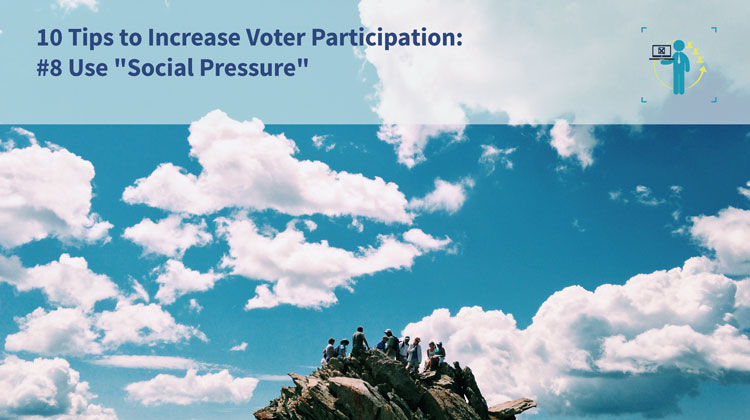
The term “social pressure” has truly negative connotations. This primarily stems from the word “pressure”, which is used in the context of force or – especially nowadays – exhaustion in the workplace. However, social pressure is a phenomenon that has been around for as long as forms of community have existed. Because, as described in the previous tip to increase voter participation, people instinctively align themselves to what others are doing. This has to do with belonging – and when one looks far back into the history of evolution, it also stems from survival strategies.
People also simply adjust themselves to the prevailing opinion of the group. And they do what most of the others do. Sigmund Freud described and recorded this in the early 20th century. Carried over to your election, this means that when a lot of people go to vote, others will join them. The only thing you have to do to utilise this social pressure is: advertise.
“If a person has no reason to do something, they have a reason not to do it.”
– Sir Walter Scott, Scottish poet and writer –
What exactly is meant by “social pressure”?
In the field of psychology there are entire essays on social pressure, e.g. as a foundation for mass phenomena. In simple terms, social pressure means the influence of society, family or other communities on the opinion or actions of individuals.
In short: Many people do something when they see others doing it. They want to fit in with social norms and rules, and not stick out for contrary behaviour. To this end, voting is also a form of civil “duty”. This applies both to political elections as well as others, such as within a company, a union or another form of community.
How can I utilise the dynamics of social pressure during an election?
When many voters show that they have participated in the election, non-voters feel more strongly obligated to cast their ballots as well. However, if one disregards those who are fully dedicated, voters will be less motivated on their own to persuade others to vote or to engage themselves more than is necessary. After all, they are voters as well and not the electoral organisers or election ambassadors.
Yet if the voters can show that they have voted without any effort, many will follow. It is best to provide buttons for them to put on. You may also create digital copies, e.g. “I voted!” badges for social networks. Stickers are also a possibility – as always, your creativity here has no limits.
Little tip: Buttons, stickers, badges, etc. are usually only worn, distributed or shared online if they are aesthetically appealing. Quietly invest in a graphic designer who can draft an attractive or funny design.
However, you have to hurry a bit: As was recently revealed by a study from the South China Normal University, social pressure only works directly and does not last long. After three days, the pressure to subscribe to a group dynamic or opinion abates once more.
Picture Source: Dwight Burdette (CC-BY 3.0-Licence)